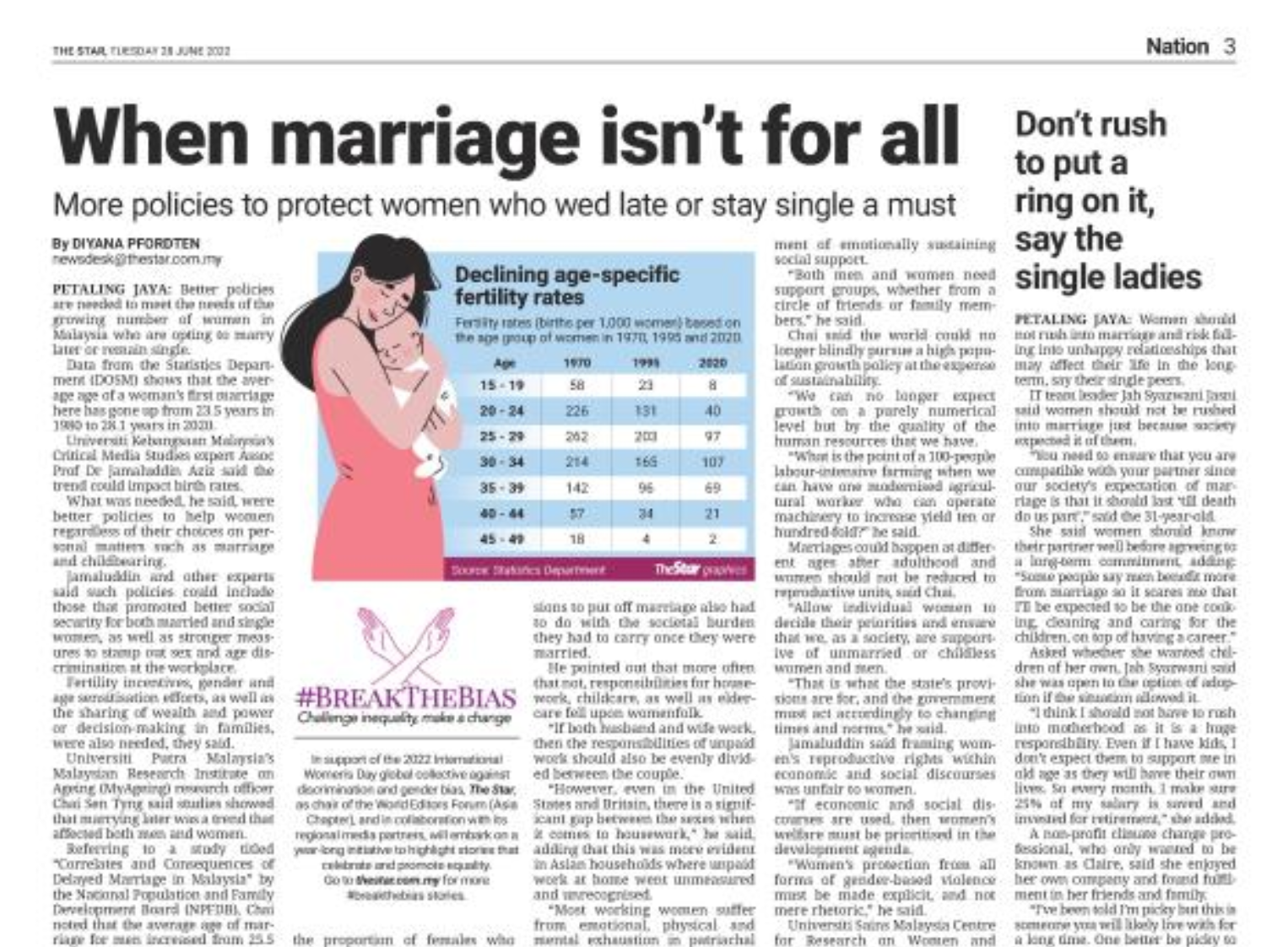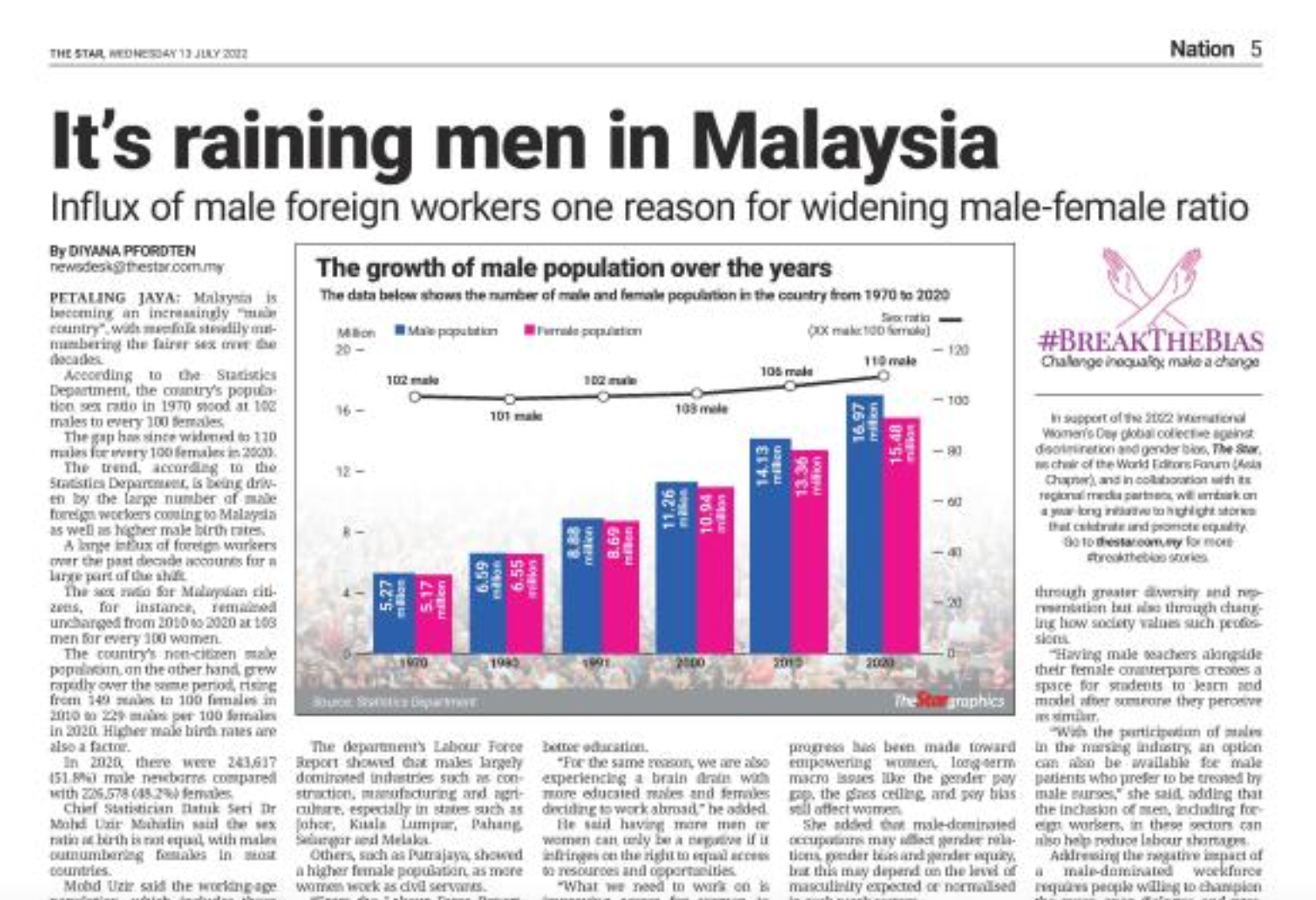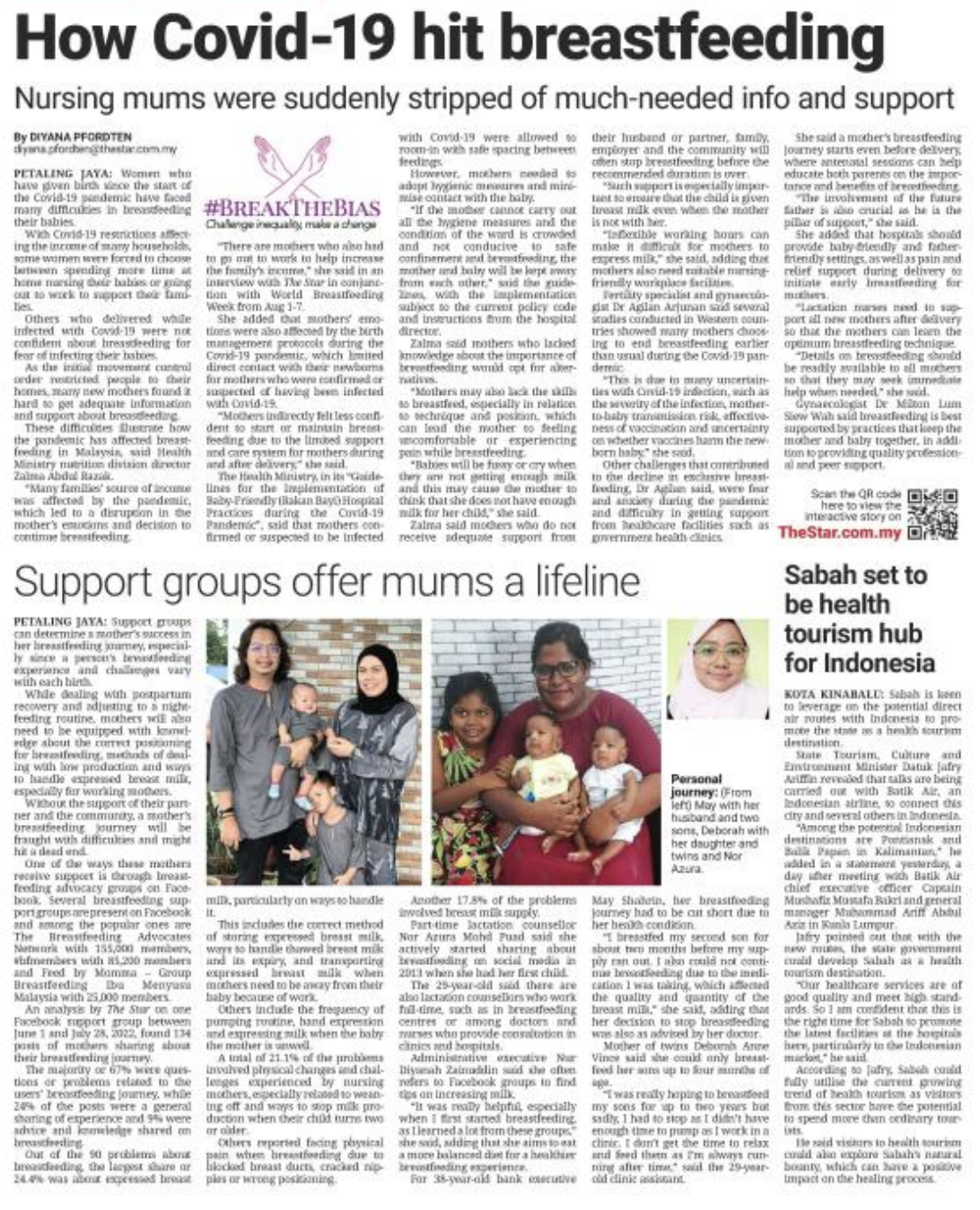To mark World News Day on September 28, 2022, the World News Day campaign is sharing stories that have had a significant social impact. This particular story, which was shared by The Toronto Star, was published on December 11, 2021.
Marineland’s Kiska is Canada’s lone captive orca. Animal experts are raising concerns about her welfare. But how do you help a 45-year-old killer whale?
The “world’s loneliest orca” in captivity lives in a theme park near Niagara Falls, a home she has known for more than four decades. For the past 10 years, she has been her tank’s only inhabitant. She has developed ritualistic behaviours that experts call atypical: She floats in one corner of her tank. She circles the tank slowly and repeatedly, often following the same path. She thrashes her body near the tank wall with such force that each movement creates waves that crash high enough to crest over the edge of the enclosure. As abruptly as the thrashing starts, it stops again. Soon, she’s back to swimming in slow, counter-clockwise circles. Sometimes she lingers near the water’s surface, motionless.
Her name is Kiska and she is Canada’s last captive orca. Her tank is one of three in the park’s Friendship Cove. A few times a day, she interacts with Marineland’s trainers and is watched by the families who visit the park each season to see her swim. In a neighbouring tank, several of the theme park’s belugas swim together, separated from the orca by decorative rocks and metal gates. But everything Kiska does, she does alone.
Researchers say Kiska is the only captive orca in the world in this predicament, living in total isolation on public display. For years, there has been wide consensus among experts in captive wildlife and wild orca populations that Kiska’s solitary life is unnatural. But over the past several months, videos recorded at Marineland and shared online have gone viral, capturing the attention of people far beyond Canada. Headlines from media around the world have labelled Kiska “the world’s loneliest orca.”
This week, a new assessment of the animals at the park conducted by Ingrid Visser, principal scientist at the New Zealand-based not-for-profit Orca Research Trust, was released. Visser is among the world’s most active researchers studying the effects of captivity on cetaceans. The report, titled “Assessment of Situation of the Cetaceans Held at Marineland of Canada,” was prepared for the France-based organization One Voice and argues Kiska’s situation is “profoundly disturbing” and represents an orca struggling to thrive in her captive environment.
What Kiska should have, most experts agree, is companionship.
She should have another killer whale to keep her company, Lanny Cornell, a marine-mammal veterinarian who has worked with Marineland and SeaWorld, told a Senate Standing Committee on Fisheries and Oceans in May 2017. But a 2015 Ontario law barring bringing new orcas into captivity and applauded by many observers prevents the park from purchasing a companion for Kiska. So does the 2019 federal Ending the Captivity of Whales and Dolphins Act. Releasing her to the wild, Cornell told the panel, “would be her death sentence,” given a persistent medical issue discovered when Kiska was first captured. Cornell did not respond to interview requests from the Star for this article.
For decades human actions have confined Kiska’s life. Recent progress ensures there won’t be others like Kiska, but it has hardly solved all of Kiska’s problems. The Visser report and viral videos have shone a light on questions surrounding the orca, galvanizing a long-simmering campaign. A growing global chorus of researchers, activists and animal lovers is insisting that we must help Kiska.
The question now is how.
Kiska was caught off the coast of Iceland in 1979, when she was roughly three years old. She arrived at Marineland the same year. Through the 1960s and into the 1970s, orcas were routinely captured in nets off the west coasts of the U.S. and Canada. After the practice was barred there, captors moved to the coast of Iceland, where they continued through the 1980s.
At 45 years old, Kiska is middle-aged compared to her wild counterparts, but an outlier for captive orcas. During her time at Marineland, 19 other orcas have lived in the park, several birthed by Kiska herself. She had five calves: Kanuck, Athena, Hudson, Nova and one baby who was unnamed. None lived beyond age six, according to data available on Ceta-Base, an organization that tracks cetaceans in captivity around the world.
Marineland’s orca population dwindled through the mid-2000s. Some of Kiska’s tankmates were sold to other parks. Others died. In 2006, Marineland struck a breeding agreement with SeaWorld, trading four belugas for Ikaika, a young orca intended to be a mate for Marineland’s female orcas. Five years later, Ikaika was returned to SeaWorld, the result of a public custody battle between the two parks. By that time, the park’s orca population was down to two. Now, with Ikaika gone, Kiska began a new life on her own.
Over the years, Kiska has developed ritualistic behaviours. Experts who have studied animals in captivity call these “stereotypies”: abnormal, repetitive and non-functional behaviours that typically signal stress in captive animals. In one interview with the Star, Ingrid Visser, the New Zealand researcher, posited that in her barren tank near the Niagara Falls, Kiska might be experiencing a level of “psychosis.” (Marineland did not speak to the Star for this story but has maintained over the years that its animals are well cared for and healthy.)
The behaviours are detailed in Visser’s report, based on photos and video evidence collected over four trips to Marineland between 2015 and 2021. The report offers renewed insight into the lonely orca’s mental and physical health.
Kiska’s welfare is “severely compromised,” Visser argues in the One Voice report. She cites physical evidence of Kiska’s stereotypic behaviour: raw wounds have been observed on her tail flukes, Visser alleges, which she says are a result of Kiska repeatedly rubbing her fins and tail on rough surfaces of her tank.
The thrashing she describes was captured in October by One Voice representatives as well as during the summer via drone, an effort from animal-rights activists trying to bring attention to the orca’s situation.
The drone operator shared some of the footage with Phil Demers, a former Marineland trainer turned critic, who has posted prolifically about the theme park since leaving his position in 2012. (Marineland sued him in 2013 for a number of allegations, including trespassing. In response, Demers launched a countersuit.) Demers shared the footage online. The Star has since spoken with the drone operator, one of whose videos shows Kiska’s repetitive counter-clockwise circuit of her enclosure. Another video, recorded in February, shows the killer whale floating in a corner of her tank.
The Star has agreed not to name the drone operator due to their concern over reprisal for recording the videos. While the floating and circling behaviours may not seem unusual for an orca, they are still repetitive, experts note. Stereotypies are diverse, said Georgia Mason, a behavioural biologist at the University of Guelph who specializes in animal welfare. The behaviour can include head rocking or nodding, body rocking and pacing the same path in their enclosures.
If animals start repeating “strange” behaviours, “it’s almost never a good sign,” Mason noted. Stereotypies, she explained, often develop out of an animal’s natural behaviour, which later devolves, becoming an odd repetition of what they would do in the wild.
Visser has also visually observed Kiska’s teeth, though she has not physically examined them. Coloured a dark yellow and worn in some cases down to the gum, they appear to be “severely” damaged, Visser said in the report. Kiska does not need to forage for her food in a way that would wear down her teeth, she notes. In the centre of the teeth are holes, which could have appeared naturally or could have been drilled by park staff to assist in keeping them clean. The yellow stain, Visser explains, could be the result of an iodine-based antiseptic used to flush debris from the holes in Kiska’s teeth.
It’s not possible to know exactly how the tooth wear or the holes appeared without access to Kiska’s health records. The Star requested an interview with a veterinarian at Marineland but received no direct response. Marineland has not responded to multiple requests for comment on the allegations about Kiska’s health from the Star, or to requests to be allowed access to the park outside of seasonal hours to observe Kiska in person.
Andrew Burns, a lawyer for the park, responded to the Star through a series of emails over a period of about one month. While he did not answer questions about the behaviours observed in Kiska, he responded to inquiries about Kiska’s teeth: “You provide no facts linking the condition of her teeth to any perceived health issue,” he wrote. “You and the Star make that negative and false assumption without factual basis. You may not like the look of her teeth but that does not establish anything.”
Burns also suggested that the experts who provided comment for this piece could not draw their conclusions from what the video clips showed. “Perhaps the videos are so short and so unclear none of (the experts) can make sufficient observations to provide a remotely credible opinion at all,” he wrote in an email. He questioned whether the videos were manipulated, saying Marineland could not respond to the content of the recordings without knowing who filmed or shared them. “Videos are nothing more than an electronic visual allegation,” Burns wrote.
Allegations of poor welfare for the animals in Marineland’s care have circulated for decades and were the topic of a 2012 whistleblower investigation by the Star. Marineland sued the Star over some of these articles, though the litigation did not progress. In 2016 and early 2017, Marineland was charged with 11 counts of animal cruelty, none of them relating to the park’s marine animals. All were later dropped, with Crown prosecutors saying at the time that there was no reasonable chance of conviction on most of the counts.
In 2017, Lanny Cornell, who had been tasked with conducting a report into the medical conditions of Marineland’s wildlife, told the Senate committee that in his opinion, all of Marineland’s animals were in good health at the time. He explained that he conducted a visual examination of the animals and reviewed their medical records. In his testimony Cornell said he “didn’t see anything there that would require me to do any kind of physical examination on the animals because they all appeared to be in very good health.”
This year, two complaints about the theme park were levied to Chief Animal Welfare Inspector Paula Milne by Animal Justice Canada (AJC), an animal rights organization. In July, AJC brought forward a complaint calling for Milne’s agency to investigate if Marineland is “unlawfully subjecting Kiska to distress and suffering” given her solitude and an apparent shortage of enrichment activities and toys. The complaint, alongside a second complaint brought forward by AJC in October that questions the legality of ongoing dolphin performances at Marineland, looks to test the park’s practices against the Provincial Animal Welfare Services Act (PAWS) and amendments made to the Criminal Code in 2019.
At that time, the federal government passed the Ending the Captivity of Whales and Dolphins Act, which also made it an offence to export or import the animals, breed them, or use captive cetaceans for entertainment. (Through an exception, Marineland is allowed to keep the animals it already owns. However, it cannot breed more.)
A spokesperson for Ontario’s Ministry of the Solicitor General confirmed it has received AJC’s complaints about the welfare of the animals. “Given the ongoing inspection at Marineland, it would be inappropriate to provide further comment,” the spokesperson said.
In an email Thursday, Niagara Regional Police confirmed they are investigating the park after receiving a complaint from a member of the public in late October. “An investigation has been commenced and is being conducted by detectives of our 2 District Niagara Falls detective office. As the investigation remains ongoing it would not be appropriate to provide further investigative details and potentially jeopardize the investigation,” a police spokesperson said. Marineland did not respond to questions about the police investigation.
In her report, Visser argues Marineland is violating sections of the PAWS Act. The government, she said, should be further enforcing legislation that already exists to protect Kiska’s welfare. “If those regulations were enforced, at least there would be minimum standards (of care) being met,” Visser said.
Marineland has often responded assertively to criticisms of its practices. In October 2017, the park sued the Ontario Society for the Prevention of Cruelty to Animals (OSPCA) seeking $21 million in damages and alleging the charity was targeting Marineland in an attempt to bolster its own funding and harm the park’s reputation.
Marineland did not respond to questions from the Star about the recent complaints or the ongoing inspections. But in an email to the Star, Burns, Marineland’s lawyer, wrote that allegations raised about Kiska’s welfare are “false and made in such a one-sided biased manner they lack any credibility.”
He questioned the integrity of the Star’s journalism and the credentials of those contacted for expert insight. “You state they are ‘independent’ when they are so obviously not it is laughable,” he wrote in an email. “The Star can declare a goat an ‘expert’, it doesn’t make it true.” In another, he writes it is clear the experts have an agenda which fits “the Star’s position on Marineland, and will say anything from one minute to the next.”
“There is absolutely no pretence of objectivity or reporting of ‘news’ by you or the Star,” Burns wrote in one email to a reporter. In an email sent to the Star’s editor-in-chief, he argued, “This ‘story’ cannot be disguised as a matter of public interest that excuses you from printing the truth.”
“It is manufactured propaganda in agreement with and direct aid of the personal financial interests of animal rights activists.”
Burns clarified in a later email he was not speaking on behalf of Marineland.
Ingrid Visser’s interest in animals like Kiska goes back years. She studied New Zealand orcas for her PhD dissertation, and she has travelled to 46 facilities around the world that keep the mammals in captivity. Three of those trips, in 2015, 2017 and 2018, were to Marineland. There she observed Kiska, as well as the park’s five dolphins and its numerous beluga whales. In 2015, she prepared a report about Kiska’s health that was later presented to the Senate during the debate over Bill S-203.
At 7 a.m. in New Zealand on a recent Sunday, the Star spoke with Visser by video conference at her home in Tutukaka. The morning sun was streaming in her windows, casting a bright light over a work room decorated with several plush orca whales and a replica orca skull. She apologized for the state of the room – the dog had just been in and left its toys behind.
Representatives from One Voice visited the park in October and approached Visser with their findings for review. She has studied the videos and photos they gathered and her own materials, which she compiled over several visits.
Visser doesn’t agree with the most dramatic responses to the videos of Kiska. In one video shared online by Phil Demers, the former Marineland trainer, Kiska appears to thrash near a glass barrier that offers spectators a view into her tank. It prompted speculation that she intentionally hits her head on the wall, but Visser stresses this may not be the case. In situations where cetaceans have hit their heads in the past, there is typically a loud cracking sound from the force of the blow. There could also be visible bruising or abrasions, which Visser said she hasn’t observed on Kiska. Even so, Visser believes the action is serious. The thrashing is “psychotic,” she said, and added “it’s stress-related. It’s purely from being kept in captivity.”
Kiska’s tank is small, Visser pointed out. Measurements taken on Google Earth show the enclosure to be approximately 40 metres by 20 metres excluding a shallow area that Visser says is not deep enough for the orca to comfortably swim. It’s unknown what the depth of the tank is, but Visser estimates it to be around nine metres. (Requests to confirm the size of Kiska’s tank went unaddressed in emailed responses from Burns.) Another, smaller tank is shared by Kiska and the belugas, but Visser has never documented them in the tank together. That tank measures about 21 metres by 17 metres and is connected to Kiska’s usual enclosure by a gate. Kiska doesn’t always have access to both sections, Visser notes.
Every day, Kiska completes her counter-clockwise circuit of the tank’s perimeter, always circling the same environment. In the wild, pods have been observed travelling between 100 and 220 kilometres each day. One hundred kilometres is the distance of the drive from Marineland to Oakville.
But Kiska’s small quarters aren’t Visser’s only concern. Visser suggests a thought exercise: picture the water drained out of the tank. Now, put a different animal in it, maybe a dog, and leave the tank empty of anything to look at. A few times a day, feed that dog a meal and pat it on the head. Then, leave it alone until the next day.
“Would anybody think that was OK for any other species?” Visser asks. “I don’t think so.”
At the surface, Kiska’s tank is decorated with large rocks and lined by a red concrete ledge around the perimeter. Underwater, though, it’s a different story. It does not appear there are always toys for Kiska to play with, Visser writes in her report, or interesting parts of her enclosure that would offer extra enrichment to her daily routine. A few times a day, trainers come to Kiska and brush her, clean her teeth and pat her. Sometimes they practise “targeting,” a training technique that helps hold Kiska’s attention in one spot so they can guide her to certain areas when needed.
Neither Marineland nor Burns have addressed questions about the enclosure or enrichment activities provided to Kiska.
When animals in captivity live in “impoverished” environments without interesting physical or sensory stimulation, their well-being can suffer, said Mason, the biologist from the University of Guelph. Recently, Mason conducted research into parrots, which examined why some species were more prone to stereotypic behaviours in captivity. Though the team didn’t find that a change in the animal’s natural social structure was a risk factor, a parrot’s intelligence level seems to be – something they inferred from the size of the animal’s brain.
The research by Mason and her team offers some evidence that intelligent animals experience something humans already know: Solving problems feels pretty good. Wild animals are constantly faced with complicated decisions and measuring risk, Mason said. Bringing those same animals into captivity means there’s no need to make decisions at all.
At Marineland, Kiska probably doesn’t have to think, Mason said.
Killer whales have evolved to be highly intelligent animals who form lasting relationships among their own species, explained Deborah Giles, science and research director for Wild Orca, a not-for-profit organization that studies the southern resident killer whales which reside on the pacific coast near Washington, U.S. The mammals have long lives, with some female orcas observed living well into their 80s, Giles said.
In the wild, killer whales usually live in tight-knit matrilineal pods. In fish-eating populations, some groups of orcas can be found in pods of 20 or more. Except for rare cases such as that of Luna, a young orca who became separated from his mother and lived alone off the coast of Nootka Sound on Vancouver Island, orcas typically stay in the company of others throughout their lives.
Kiska’s solitary environment, Giles said, is the “antithesis of what these animals have evolved to experience.” Visser agreed, calling the solitary confinement Kiska experiences “one of the cruelest things they can do to her.”
When Kiska is observed hovering near the surface of her tank, she’s doing something you’d rarely see in wild orcas: staying still. Lingering in the same area for extended periods isn’t normal, Giles said. If they did, she adds, they could be susceptible to mosquito bites or sunburns. “A wild killer whale isn’t going to stay in one place long enough to get bitten by a mosquito,” she added.
In fact, Giles said, the cetaceans are almost always moving. This changes when they rest, she explained, when the orcas enter a “synchronized dive profile” and group close to one another near the water’s surface so they can rest more effectively.
Unlike humans, orca brains don’t enter a full REM cycle. Instead, Giles explained, half of their brain enters a deep sleep, while the other stays alert. When they sleep in a group, a more alert “sentinel” orca helps the pod come up to the surface to breathe. The result, researchers believe, is a deeper sleep. “A solitary killer whale does not get that benefit,” Giles said. Isolation, then, could affect even an orca’s ability to sleep deeply.
On social media, the movement to “#FreeKiska” is gaining steam. Demers, the critic, said the difference this time is the accessibility of smartphones which allow anyone to record the animals in the park’s care. It’s not unusual, he said, for people to send him videos they’ve taken. This year, Demers decided to share some of them.
Demers said in a phone interview in October that the footage has gained “huge” traction. As of the time of this article’s publication, the footage of Kiska Demers posted on Twitter in September has been viewed almost 800,000 times. On YouTube, the videos have amassed close to 200,000 views. The message, Demers added, is clear: “They want her removed.”
But is it feasible to #FreeKiska? Marineland has publicly opposed moving the orca, arguing that doing so could kill her. So what do you do with a 45-year-old killer whale?
Right now, a debate rages, with advocates for Kiska arguing she should be moved to a coastal sanctuary. One group fighting for the release of captive cetaceans has put forward plans for a seaside sanctuary and hopes to one day care for her in her natural habitat, but there is a long road ahead before it’s completed and fully approved. Burns, Marineland’s lawyer, argues that no such facility currently exists anywhere in the world. Certainly, at the moment there is no sanctuary in Canada that is ready to accommodate her.
Organizations such as the Whale Sanctuary Project (WSP) are looking to change that. Lori Marino, a neuroscientist who studies the brains of cetaceans and appeared in the documentary “Blackfish,” is a co-founder and president of the project. The sanctuary, she said, could offer a safe haven for Kiska. While the project is still in the permitting process and faces funding hurdles, several experts interviewed by the Star agreed it would be a best-case scenario for her if it can be completed.
On its website, a blog post authored by WSP executive director Charles Vinick says the organization is “confident that (by) working with Marineland or with the government or both, we can find a solution so that she can begin a new life in a natural environment.”
The project would see 100 acres sectioned off the coast of Nova Scotia for formerly captive cetaceans, with room for up to eight beluga whales and two or three orcas, Marino said. Whales at the sanctuary would not be reintegrated with the wild but cared for by an on-site veterinary team who would conduct health checks of the animals. The space would add an enrichment that captive cetaceans don’t currently have, she added: access to their natural habitat.
When asked to comment about a possible dialogue between Marineland and the WSP, the park did not respond. Marineland has previously expressed fear about moving Kiska, writing in a 2015 press release that moving her to a “substandard facility run by well-meaning but grossly unqualified extremists, is simply cruel to her, disorienting, and will, no doubt, kill her.” Marineland also flagged as a risk the presence of pathogens in the sea water and her “elderly” age.
Proponents of the project have called for an independent and objective panel of scientists, veterinarians and animal welfare experts who can assess Kiska and see if she could endure a move to the coast. Marineland and other parks often move their animals around the world successfully, Giles, the wild orca researcher, points out. “What’s best for Kiska is still unknown, because a proper assessment and determination of what’s best for her has to be made by professionals outside of Marineland,” Demers said.
The Whale Sanctuary Project hopes to see the facility operational by the end of 2022 or in early 2023. A visitor’s centre for the future site opened in October.
In a perfect world, Visser said, Kiska should head to the sanctuary. There’s a problem, she added. This isn’t a perfect world.







